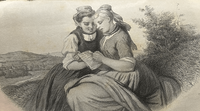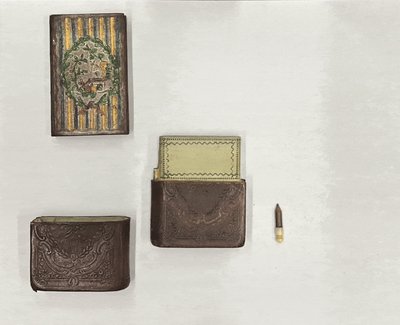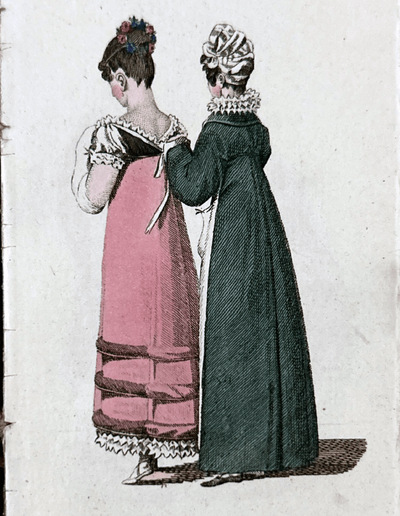

This remarkable edition features a hand-painted, embossed leather cover with gilt edges, a leather slip case with a green paper sleeve within, and a small ivory-topped pencil, sharpened by knife many years ago. http://pi.lib.uchicago.edu/1001/cat/bib/3778720
The German Almanacs and Taschenbücher Collection is a collection of approximately 1,700 Musenalmanache and Taschenbücher, small-format literary almanacs, calendars, and other annual publications published in Germany from around 1750 to 1850. Taschenbücher were part of a sea-change in and rapid proliferation of German-language publishing at the end of the eighteenth-century. They were enthusiastically adopted by an increasingly literate middle class and growing numbers of women readers, prompting the phenomenon known variously as Lesesucht (reading mania), Lesewut (reading craze), and Leseseuche (reading plague). In addition to their textual appeal, these books are uniquely material objects, often decoratively bound, containing colored plates, and occasionally accessories like mirrors and pencils.
The core of the Library’s holdings of this genre is the collection of Dutch literary scholar Ernst Ferdinand Kossmann, purchased in 1928. The collection is supplemented with almanacs from Linckesche Leihbibliothek, a nineteenth-century popular lending library from Leipzig, purchased en bloc by the Library in 1930, along with a smaller number of others collected in the time since. Altogether, the Collection is an invaluable resource for the study of late eighteenth- and early nineteenth-century German culture. As Sam Remondi wrote of the collection: “Whether one seeks to uncover a Goethe poem, still untranslated into English, to find little-known women authors of the late 1700s, to see hand-colored engravings of the fashion of the period, or to simply revel in beautiful and antique craftsmanship, the Taschenbücher are a wonderful place to begin.”
For more information on the German Almanacs and Taschenbücher Collection, visit 2023 undergraduate fellow Sam Remondi’s digital exhibition, The Taschenbuch Collection.
For a print list of publications in this collection, consult A catalog of the German almanacs and Taschenbücher in the Department of Special Collections of the University of Chicago. (Note: this inventory lacks a small number of volumes that have been added to the collection since its publication.)

http://pi.lib.uchicago.edu/1001/cat/bib/2898326